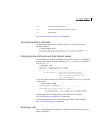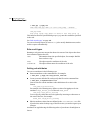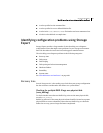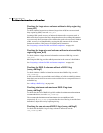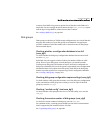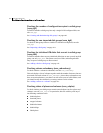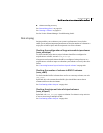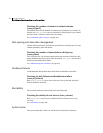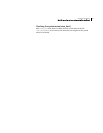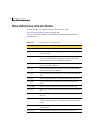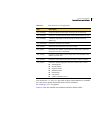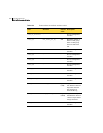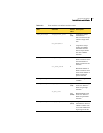
452 Using Storage Expert
Identifying configuration problems using Storage Expert
Checking the number of configuration copies in a disk group
(vxse_dg5)
To find out whether a disk group has only a single VxVM configured disk, run
rule
vxse_dg5.
See “Creating and administering disk groups” on page 165.
Checking for non-imported disk groups (vxse_dg6)
To check for disk groups that are visible to VxVM but not imported, run rule
vxse_dg6.
See “Importing a disk group” on page 174.
Checking for initialized VM disks that are not in a disk group
(vxse_disk)
To find out whether there are any initialized disks that are not a part of any disk
group, run rule
vxse_disk. This prints out a list of disks, indicating whether
they are part of a disk group or unassociated.
See “Adding a disk to a disk group” on page 171.
Checking volume redundancy (vxse_redundancy)
To check whether a volume is redundant, run rule vxse_redundancy.
This rule displays a list of volumes together with the number of mirrors that are
associated with each volume. If vxse_redundancy shows that a volume does not
have an associated mirror, your data is at risk in the event of a disk failure, and
you should rectify the situation by creating a mirror for the volume.
See “Adding a mirror to a volume” on page 271.
Checking states of plexes and volumes (vxse_volplex)
To check whether your disk groups contain unused objects (such as plexes and
volumes), run rule
vxse_volplex. In particular, this rule notifies you if any of
the following conditions exist:
■ disabled plexes
■ detached plexes
■ stopped volumes
■ disabled volumes
■ disabled logs
■ failed plexes






